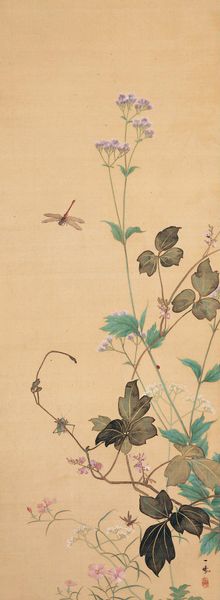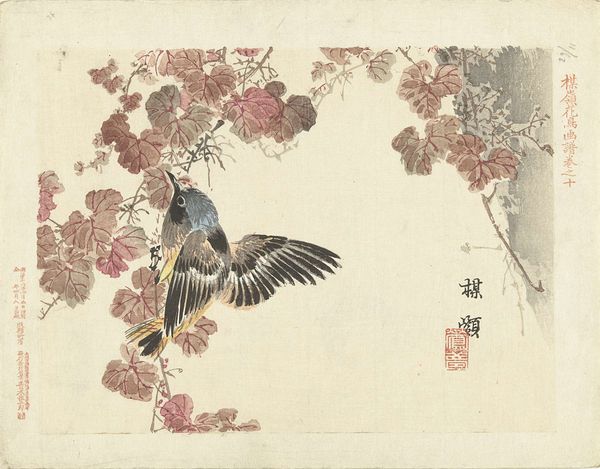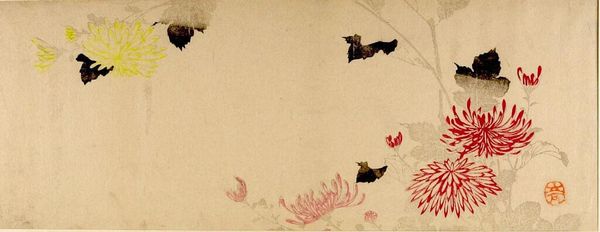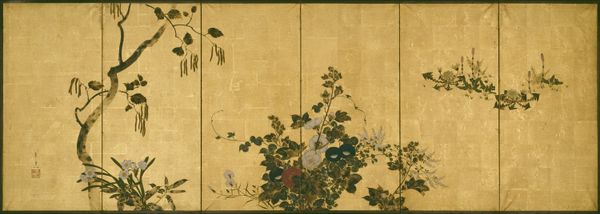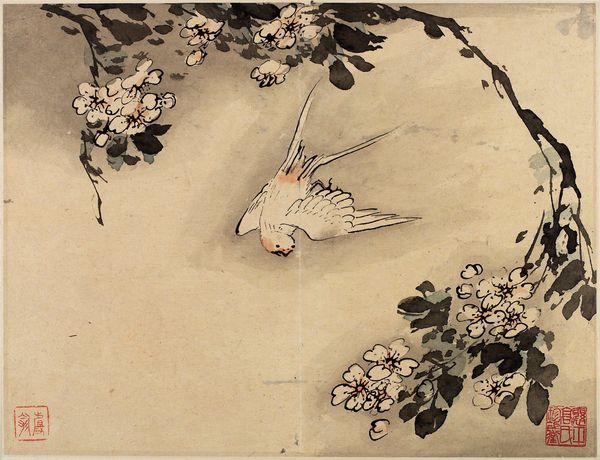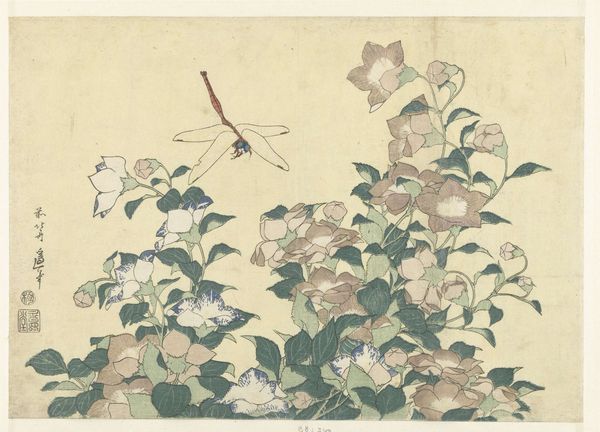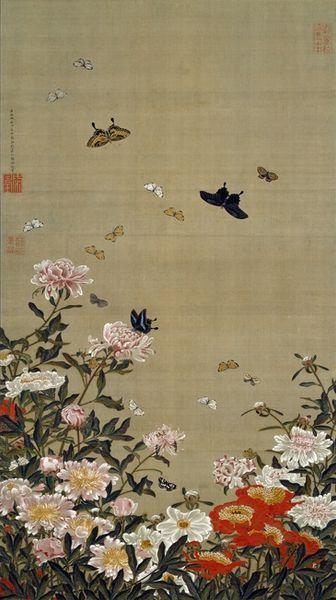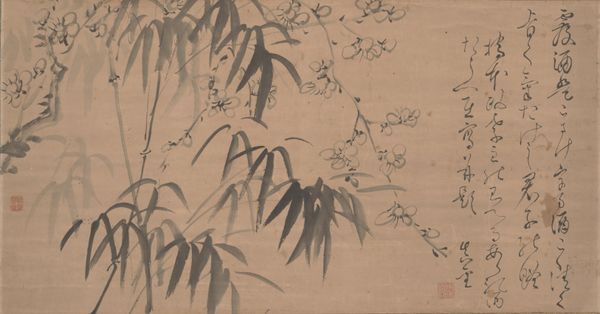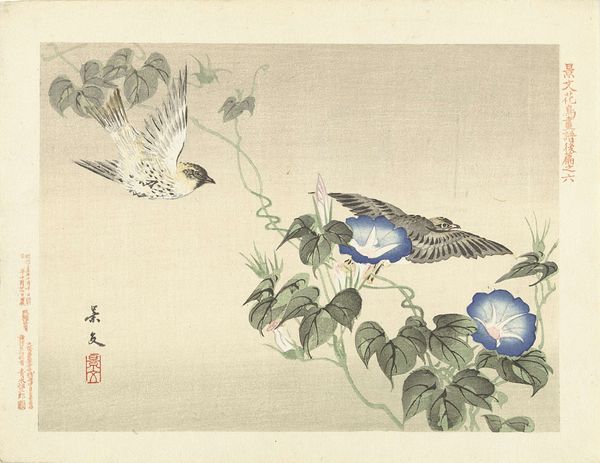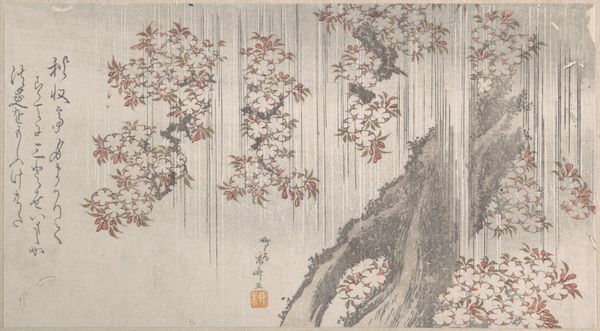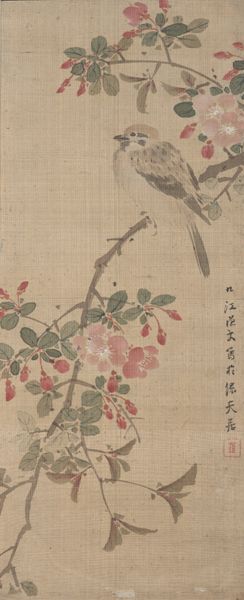
tempera, painting, paper, ink
#
tempera
#
painting
#
asian-art
#
landscape
#
ukiyo-e
#
paper
#
ink
Dimensions: 27.9 × 430.6 cm (169 1/2 × 10 15/16 in.)
Copyright: Public Domain
Curator: I'm drawn to this artwork’s dreamy and ethereal feel—like stepping into a quiet garden filled with buzzing secrets. Editor: Let's delve into Chai Zhenyi’s, *Flowers and Insects*. Its creation dates somewhere between 1644 and 1911, showcasing a landscape rendered in ink and tempera on paper. The piece is proudly held in The Art Institute of Chicago. Curator: Gosh, what strikes me most is the gentle dance between stillness and movement. You've got these exquisitely detailed flowers rooted in place, yet the air is alive with the fluttering of insect wings. Is it Ukiyo-e style? Editor: The landscape draws strongly on elements of Ukiyo-e. Consider, if you will, the social context of the work and the Ukiyo-e style specifically. This cultural phenomenon served to highlight class structure, impermanence, and fleeting pleasure as distinct—and important—aspects of society, providing perspective on its art forms, but also on the socio-political milieu it captured, and of which it was part. Curator: Okay, I see that; what's interesting is the intimacy of the painting; it makes me think about my connection to nature and this sense of wonder at its delicate balance. It also hints at stories unseen, little dramas played out within a single frame. I mean, I think of it as this world we only glimpse fleetingly, if that. Editor: I can see that! Placing ourselves within the history, we see how landscape paintings from Asia sought to reconcile lived experience with nature and cultural meaning. Curator: Beautifully put. It reminds me that art's magic lies not just in what's shown, but what it stirs within. Editor: Precisely, prompting us to engage critically with broader social structures and the ideologies shaping the narrative behind art creation. It is about situating art in context.
Comments
No comments
Be the first to comment and join the conversation on the ultimate creative platform.
